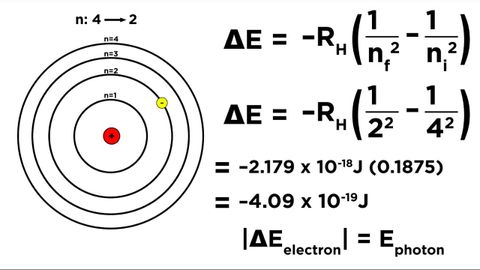
Subtitles & vocabulary
Bohr Model of the Hydrogen Atom
00
Ken Wang posted on 2015/10/14Save
Video vocabulary
light
US /laɪt/
・
UK /laɪt/
- Transitive Verb
- To cause something to burn; put a burning match to
- To provide a way to see ahead
- Adjective
- Being bright making it easy to see; not dark
- Being pale and lacking darkness of color
A1
More change
US /tʃendʒ/
・
UK /tʃeɪndʒ/
- Transitive Verb
- To exchange one set of clothes for another
- To exchange one kind of money for another
- Noun (Countable/Uncountable)
- Exchange of one set of clothes for another
- Money in the form of coins instead of paper
A1
More answer
US /ˈænsɚ/
・
UK /'ɑ:nsə(r)/
- Verb (Transitive/Intransitive)
- To reply to a question someone asks
- To solve a test question or a problem
- Noun
- Reply to a question someone asks
- Solution to a problem or test question
A1
More US /'i:meɪl/
・
UK /'i:meɪl/
- Noun
- A message like a letter sent by computer or phone
- Transitive Verb
- To send an electronic letter via computer or phone
A1
More Use Energy
Unlock All Vocabulary
Unlock pronunciation, explanations, and filters
